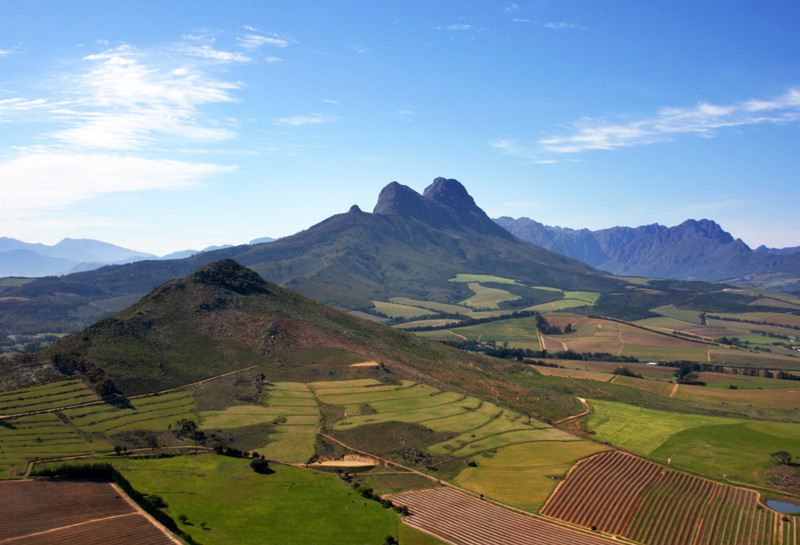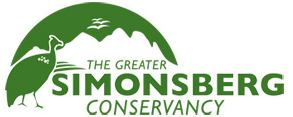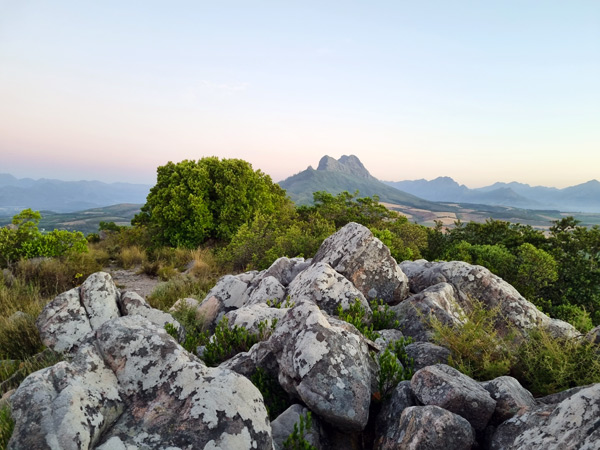OUR NEW WEBSITE IS CURRENTLY UNDER CONSTRUCTION

Supporting conservation, serving our community
Welcome! The Greater Simonsberg Conservancy is a Non Profit and Public Benefit Organisation, with the aim to support its private landowners around the base of the Simonsberg Mountain, Klapmutskop and the Banhoek Valley, in their conservation efforts, as well as providing environmental education and conservation awareness services in the surrounding communities. The Conservancy is situated in the wine region of Stellenbosch amid endangered Renosterveld and critically endangered Boland Granite Fynbos, and Renosterveld Fynbos just 50 kilometers from Cape Town, South Africa. The Office of the Conservancy is situated on Delvera Farm at the Corner Muldersvlei Road and R44, Stellenbosch.
What are the origins of the conservancy?
The Community Group started in 2000 after a devastating fire spread from Pniel around the Simonsberg and ended on Klapmutskop. The conservation efforts started by the establishment of a Conservancy under Cape Nature’s Stewardship Programme with the 5 landowners around Klapmutskop and now has about 30 members. These wine farms act as curators of the conservancy and plough their efforts into protecting and conserving the area through sustainable practices.
Geological significance
Simonsberg and Klapmutskop is situated on the dormand Colensoe fault line as well as being botanically significant because it is a meeting point for three different geological formations: Sandstone, Granite and Conglomerate (Magrug Formation). These formations support different vegetation types; Mountain Fynbos/Afromontane Forest (Sandstone), Boland Granite, Fynbos (Granite) and a Mountain Fynbos-Boland, Granite Fynbos mosaic (Magrug).
The 300 year old Yellowwood trees
One of the Conservancy’s gems is the indigenous Yellowwood and Wild Olive Forest on top of Klapmutskop. Klapmutskop is just 150 hectares in size but bursting with wildlife and rare gems. A massive fire in 2000 and the clearance of alien trees from the slopes of Klapmutskop led to the discovery on top of the mountain, of an indigenous yellowwood forest.
The Breederiver Yellowwood trees (Podocarpus elongates), some of which are 300 years-old, represent the southernmost patch of the species. The old yellowwoods frame your path by archways of branches. Miraculously surviving what nature’s served up over the years, this small indigenous forest acts as a stark reminder of why conservation is so essential.
Fauna and Flora
The area is home to the endangered Cape Leopard regularly seen in Camera traps. The call of the African Fish Eagle is regularly heard in the area and the natural fynbos surprise visitors with its beauty on a daily basis.
Biodiversity Assessments are currently underway with the assistance of funding received from the Table Mountain Fund. This is a 3 year project with the aim to raise the areas conservation status to further protect the area for Futures to Come.

